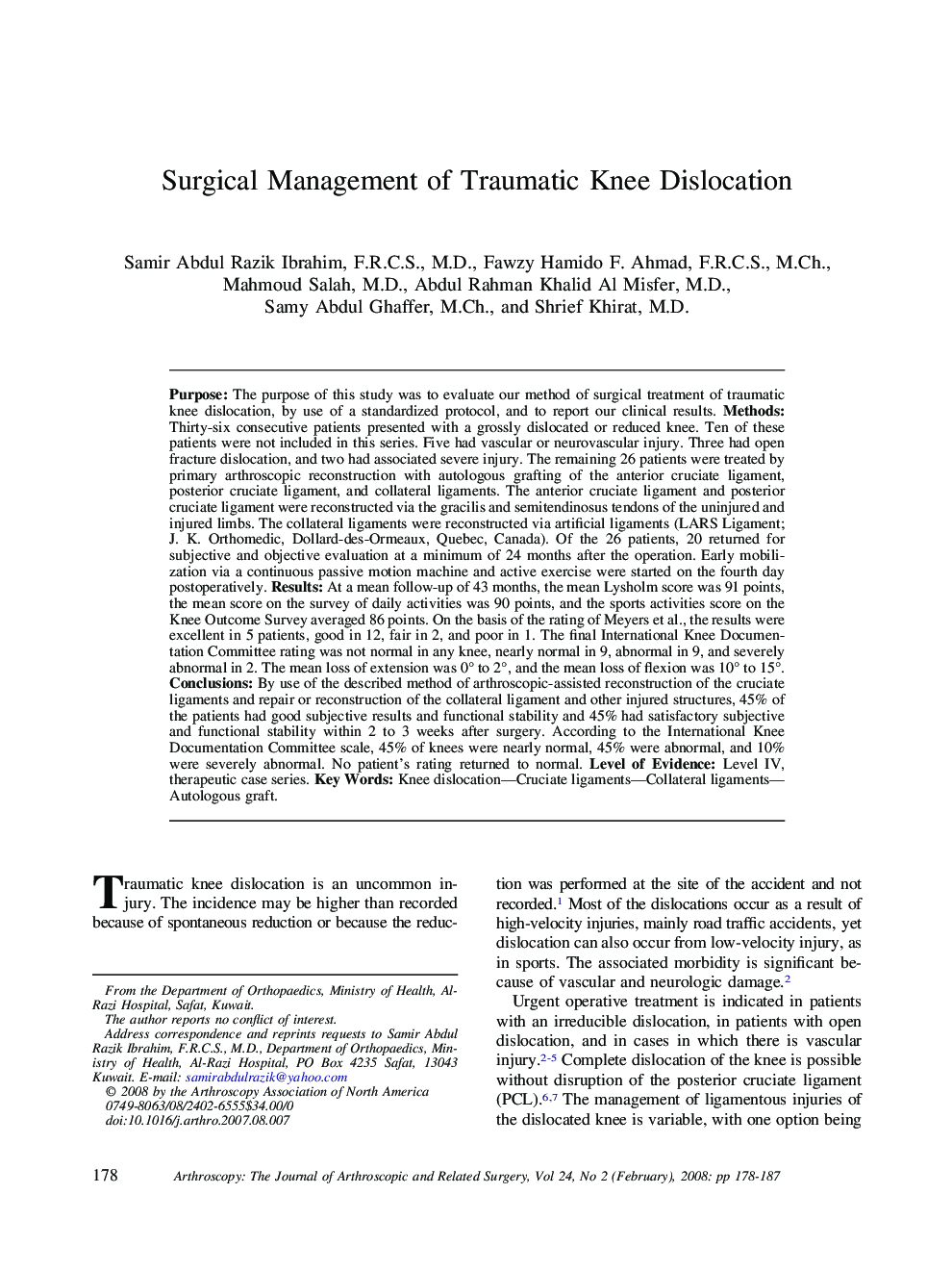| کد مقاله | کد نشریه | سال انتشار | مقاله انگلیسی | نسخه تمام متن |
|---|---|---|---|---|
| 4047286 | 1603588 | 2008 | 10 صفحه PDF | دانلود رایگان |

Purpose: The purpose of this study was to evaluate our method of surgical treatment of traumatic knee dislocation, by use of a standardized protocol, and to report our clinical results. Methods: Thirty-six consecutive patients presented with a grossly dislocated or reduced knee. Ten of these patients were not included in this series. Five had vascular or neurovascular injury. Three had open fracture dislocation, and two had associated severe injury. The remaining 26 patients were treated by primary arthroscopic reconstruction with autologous grafting of the anterior cruciate ligament, posterior cruciate ligament, and collateral ligaments. The anterior cruciate ligament and posterior cruciate ligament were reconstructed via the gracilis and semitendinosus tendons of the uninjured and injured limbs. The collateral ligaments were reconstructed via artificial ligaments (LARS Ligament; J. K. Orthomedic, Dollard-des-Ormeaux, Quebec, Canada). Of the 26 patients, 20 returned for subjective and objective evaluation at a minimum of 24 months after the operation. Early mobilization via a continuous passive motion machine and active exercise were started on the fourth day postoperatively. Results: At a mean follow-up of 43 months, the mean Lysholm score was 91 points, the mean score on the survey of daily activities was 90 points, and the sports activities score on the Knee Outcome Survey averaged 86 points. On the basis of the rating of Meyers et al., the results were excellent in 5 patients, good in 12, fair in 2, and poor in 1. The final International Knee Documentation Committee rating was not normal in any knee, nearly normal in 9, abnormal in 9, and severely abnormal in 2. The mean loss of extension was 0° to 2°, and the mean loss of flexion was 10° to 15°. Conclusions: By use of the described method of arthroscopic-assisted reconstruction of the cruciate ligaments and repair or reconstruction of the collateral ligament and other injured structures, 45% of the patients had good subjective results and functional stability and 45% had satisfactory subjective and functional stability within 2 to 3 weeks after surgery. According to the International Knee Documentation Committee scale, 45% of knees were nearly normal, 45% were abnormal, and 10% were severely abnormal. No patient’s rating returned to normal. Level of Evidence: Level IV, therapeutic case series.
Journal: Arthroscopy: The Journal of Arthroscopic & Related Surgery - Volume 24, Issue 2, February 2008, Pages 178–187